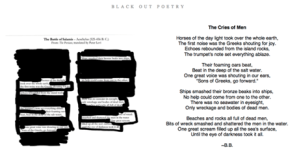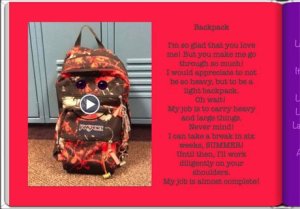Barbaric Yawp in the 21st Century: Using Tech to Engage Budding Poets
What if Dead Poets Society were set in modern times? Would Mr. Keating (Robin Williams' character) tweet Walt Whitman?
Would the students have created a Facebook group rather than sneak off to a cave? Or would Mr. Keating have told the students to turn off all devices and leave them in their bags, maintaining the traditional classroom setting? I think it would be more of the former.
In the movie, students shouted quotes to music blasted from a record player while on the soccer field. They explored alternative learning spaces by walking the halls of the school. The students from Mr. Keating's class found relevance in their study of poetry because he taught them:
We teach poetry because "it is language distilled to its most effective level. Poetry = language at 100 percent proof!" tweeted Carla Beard (@webenglishteach). However, when I taught ninth grade English, I struggled to help my students find a passion for language. To them, poems seemed out of reach. My students lacked a bond with the rhythm and verse because, unlike Mr. Keating, I did not find a medium through which they could connect to it.
However, given our students' inclination to use technology, consider the potential if we leveraged that desire to help them better identify with poetry.
Uncovering Poetry in Primary Sources
Much like I inadvertently destroyed a number of great literary works with bad book projects, I will also confess to assigning a handful of brutally dry poetry assignments. I asked my students to construct meaningful language from thin air without inspiring them to express an idea in its purest sense.
Lauren Putman (@PutmanLauren), on the other hand, asked her students to begin by finding poetic language in existing writing, and then scaffolded the process. She encouraged her seventh graders to rewrite history through blackout poems. Her students used Explain Everything, Pages and iPads (although this project could have be completed with any number of tools that allow students to highlight and manipulate text) to extrapolate poetry from The Battle of Salomis by blacking out the remaining words.

Lauren also incorporated the audio recording features of Explain Everything into the process. To culminate the project, she asked her students to the record an audio reflection about their poems to further synthesize the experience.
Delivering Poetry through Multiple Media
We ask students to write poetry so that they gain hands-on exposure to the construction of language and practical experience with meter, rhyme and verse. We also want to provide them with an opportunity to more fully and deeply express themselves, yet we often constrain them to a single modality -- text -- in spite of the fact that they live in a media-rich world. With iPads, Chromebooks, Android tablets or computers, students can incorporate text, imagery, motion and music into their poems.
When my sixth graders sulked into the computer lab several years ago, dismayed by the prospect of "typing up another poem," we decided to try something new. Since the assignment was to create their own version of George Ella Lyon's "Where I'm From," we decided to use video as the final product. Using their favorite music, their own photos and drawings, as well as their own writing, each student created a video version of their poem using iMovie (though Animoto, Pixorial or WeVideo could also work). In the end, they connected with the assignment and the language of poetry using their preferred medium.
The above example was created by Julia Daniel at the Tamalpais High School's Academy of Integrated Humanities and New Media (AIM) in the fall of 2010. Because I encouraged my students to use personal pictures as well as any music, we could not openly publish the final projects due to acceptable use guidelines -- stealthily adding digital citizenship into our lesson.
Let Students Sound Their Barbaric Yawp!
Minstrels, troubadours and bards shared poems in ancient times. During the '50s and '60s, beatniks brought poetry to smoke-filled bars. Even today, poetry readings and slams happen on college campuses and in coffee houses, because poetry is meant to be public and experiential.
With technology, not only can students easily share and distribute their work, but they can also publish their creations to a broader audience. Karen Bosch (@karlyb), the K-8 Technology Instructor at Southfield Christian School in Michigan, inspired her students to write their own poetry anthology, including video, audio and images, and then publish the completed version in the iTunes Bookstore using the Book Creator app (available on iPad or Android). Not only did she allow her students to incorporate media as a way to enhance their verse, but she also empowered them to share their passions with a broader audience.

Like millions of others, I found myself captivated by Apple’s campaign to discover "What Will Your Verse Be?"
The imagery, music and dimensionality of the experience, coupled with the cadence of the narration, gave life to Mr. Keating's words and issued a call to action. Before beginning another poetry project with your students, in addition to what you ask them to create, think about how you ask them to "contribute their verse."
